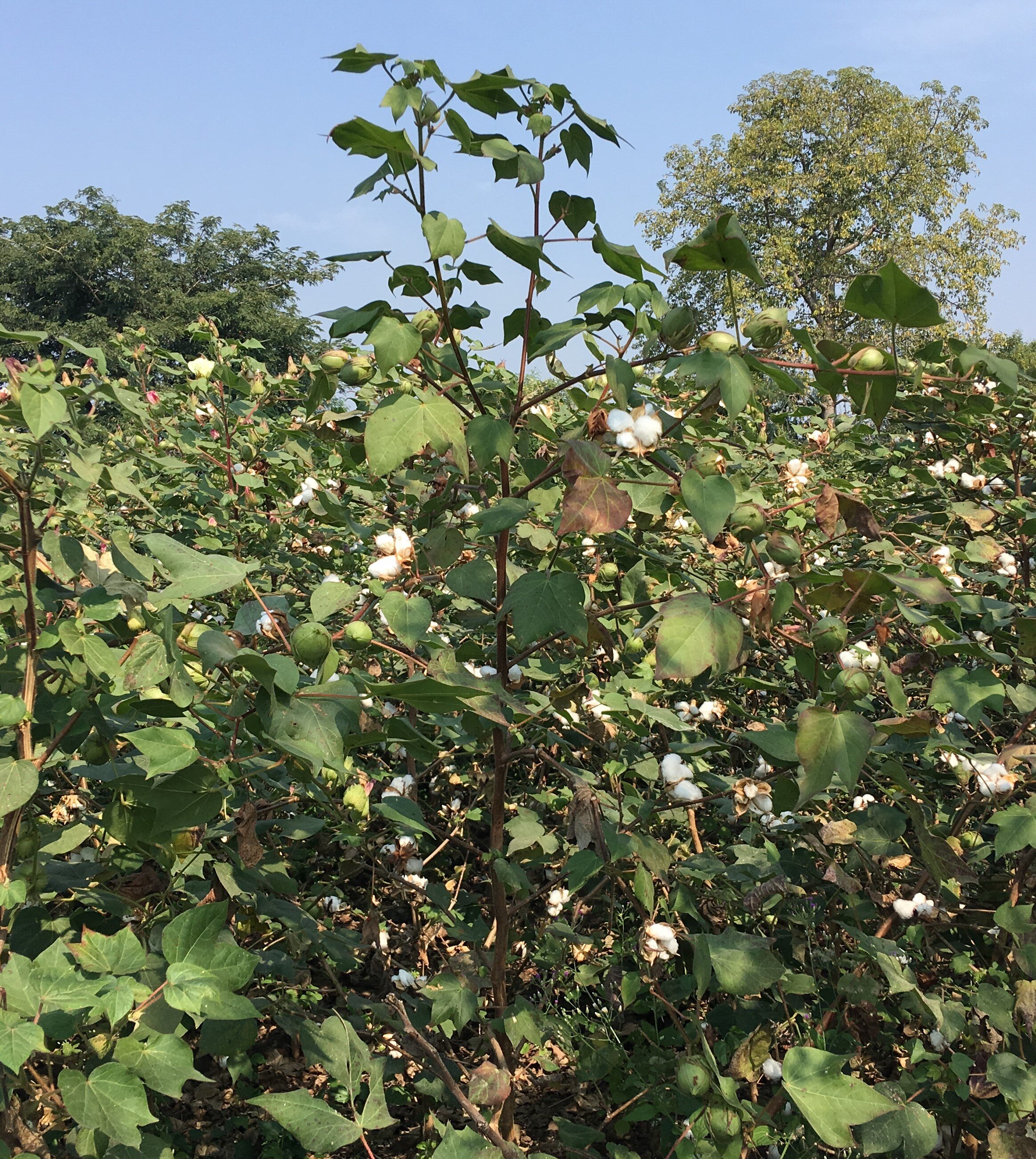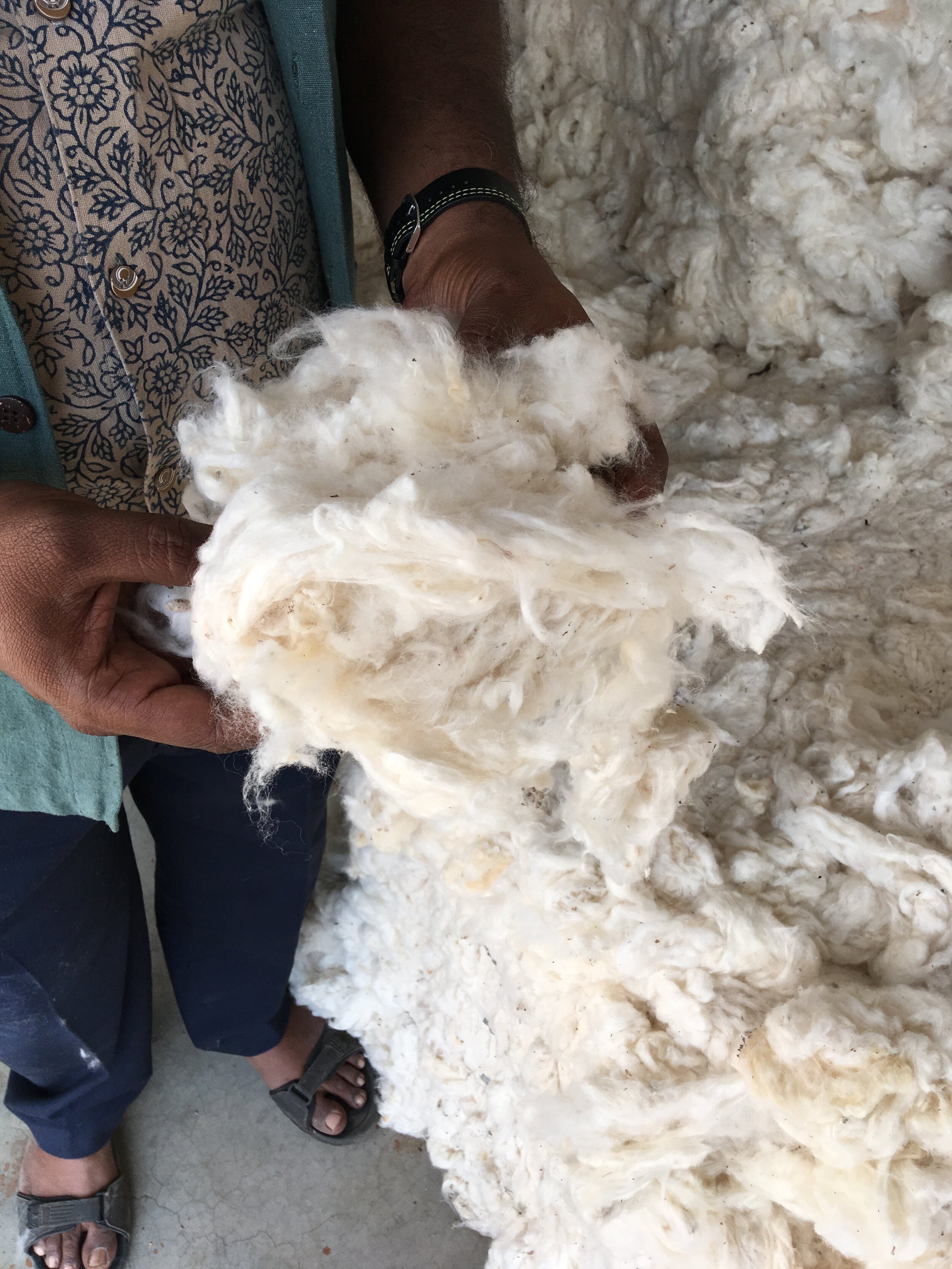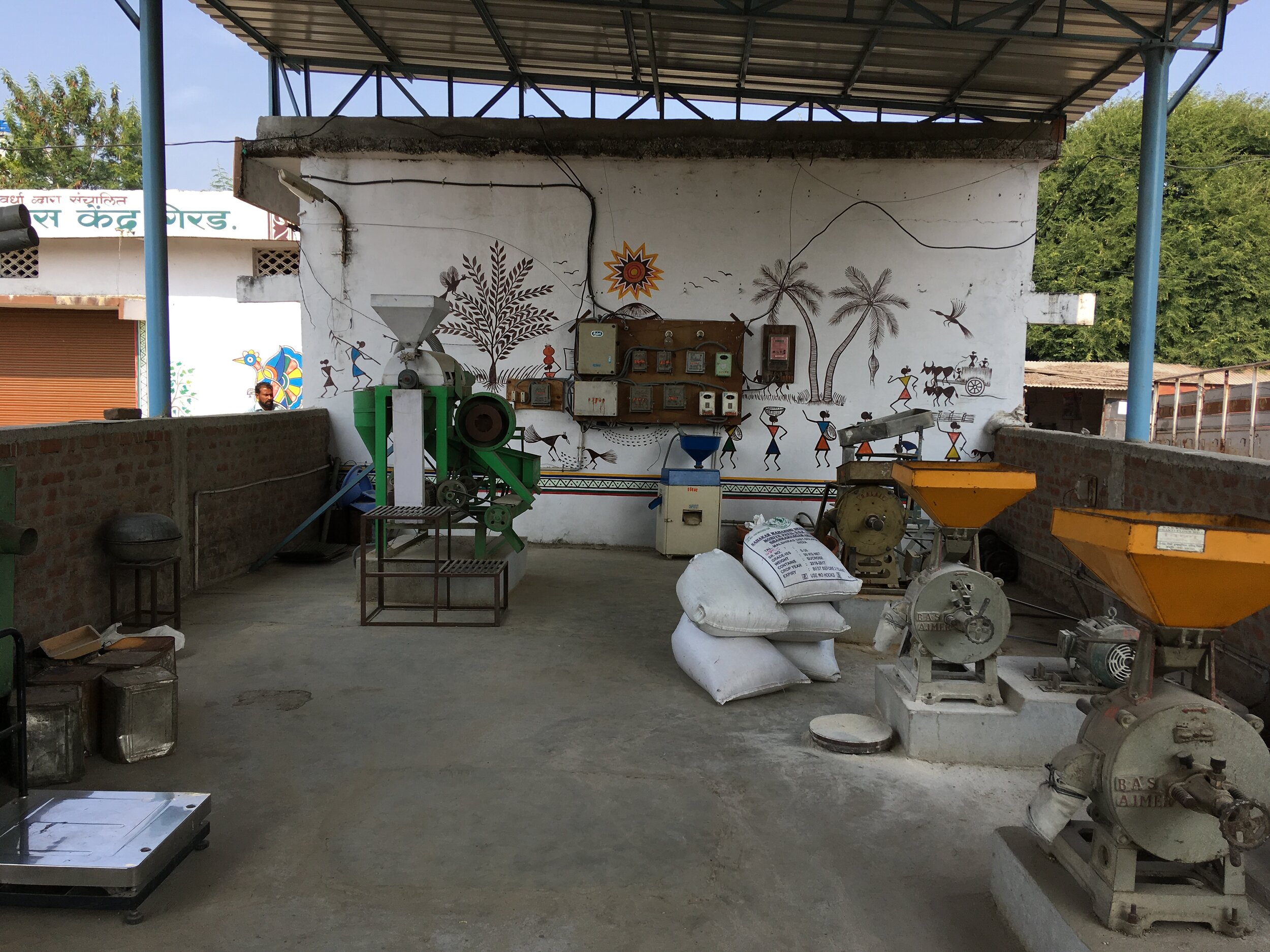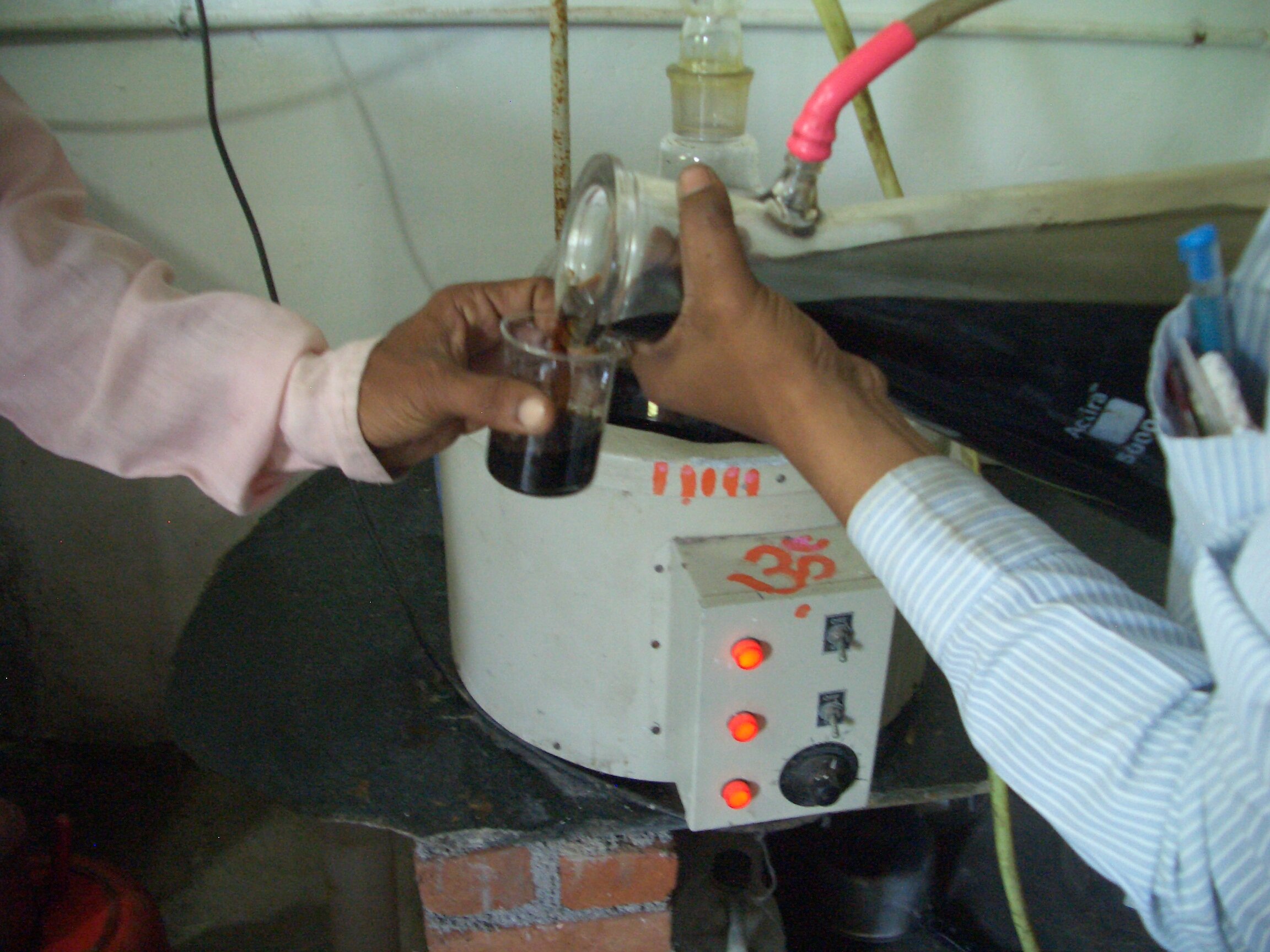Beyond Organic: Restoring the Land and Communities with Regenerative Textiles
Image: an organic cotton farm at Magan Sangrahalaya Samiti (MSS)
At Ecosophy, we’re passionate about responsible textile production. We choose to work with growers and producers who adopt organic and sustainable practices as well as ensuring fair and safe conditions for their workers. Recently, we’ve been finding out more about regenerative agriculture and its potential to transform our fibre systems, rebuilding soil and water health to leave the environment in a better state for future generations.
What is Regenerative Agriculture?
Regenerative agriculture is a term used to describe a collection of farming and grazing practices that help to repair environmental damage and rebuild healthy ecosystems. These include practices that help increase biodiversity, improve soil fertility, reduce soil erosion, sequester carbon and generally offer a more sustainable way of producing our food and fibres.
Whilst there is an overlap between organic farming and regenerative farming, the key difference is that with regenerative agriculture, producers are not just sustaining the land so that it can continue to be used in the future. They are actively improving what is there and leaving it better for the next generation.
Image: organic farmers linked to MSS with their cows, which play an important role in regenerative agriculture
Regenerative Fibres
Plant fibres like cotton, hemp and linen can all be grown regeneratively in ways that maximise the drawdown of carbon from the atmosphere and restore soil and water health.
Conventionally grown cotton is the most pesticide-intensive crop in the world and the pollution caused by these pesticides affects thousands of cotton farmers and their families each year. It’s also grown with huge amounts of irrigation, accounting for 69% of the water footprint of all textile fibres. These problems have led to an increasing number of farmers adopting an organic approach, avoiding chemical inputs and using natural methods of pest control. In addition to the benefits of organic cotton, regenerative cotton focuses on rebuilding the health of the soil. Regenerative techniques include reducing tillage (which reduces disturbance to soil ecosystems), planting multi-species cover crops to enrich and improve the soil, and ‘alley cropping,’ a technique where organic cotton is grown between rows of trees like mulberry and fig. The organic cotton farmers we source from in India, such as Chetna Organic and Magan Sangrahalaya Samiti (MSS), use many of these techniques.
Regenerative farming often involves the use of indigenous plant varieties that offer unique advantages over more modern varieties. Khamir’s Kala Cotton Initiative uses Kala cotton, a variety that’s indigenous to the Kachchh region of Gujarat. It’s a drought-resistant, purely rainfed crop so it doesn’t need irrigating. It’s also highly disease and pest resistant and can be grown without any chemicals. Kahmir was one of the first producers we visited when setting up Ecosophy and we hope to introduce some new textiles made using their Kala cotton soon.
Like plant fibres, wool can be regenerative if the animals are grazed on landscapes where the health of the pasture is restored through building soil fertility and the use of prescribed grazing systems to enhance biodiversity. Fibreshed is a US-based organisation championing regenerative textile systems with a particular focus on wool. Their work demonstrates how regenerative wool can be created alongside regenerative plant fibre systems to produce Climate Beneficial™ ethical wool. The Fibreshed ethos considers the whole system in which fibres, textiles and garments are produced, worn and disposed of. They now have several members in the UK, forming a South West England Fibreshed, with plans to expand to other areas.
Regenerative Dyes
The textile dyeing and finishing industry is one of the most chemically intensive on the planet and the number one polluter of water after agriculture. It's important to address this when looking at the overall sustainability of textile systems. We work with natural dyes where possible and these can be regenerative or not depending on how they are grown and processed.
Natural indigo - a deep blue colour from the Indigofera plant - can be highly regenerative. It’s one of the most practical and durable natural dyes and unlike most natural dyes, it can be used without a mordant to fix the dye to the textile fibres. As a legume, indigo is a nitrogen-fixing plant that naturally enhances soil fertility. It grows easily without any chemicals or irrigation and is a very useful plant for restoring dry or nutrient-depleted soils. It’s also low-waste. After harvesting, the plant stems can be used as firewood. And once the pigment has been extracted, the plant residue can be composted and used as fertiliser, with the remaining water from the dyeing process used to irrigate crops. Nijera Village & Cottage Industries in Bangladesh is one of the textile producers we work with who grow and process indigo regeneratively. They’re a social enterprise consisting of natural indigo farmers, dyers and artisans trained in the art of shibori (a resist-dyeing technique).
Image: shawl dyed in natural indigo at Nijera Village and Cottage Industries
Regenerating Communities
Regenerative fibre and dye systems offer plenty of social as well as environmental benefits. Many of the producers we work with focus on the regeneration of communities as well as the environment. Their work encourages close local links between actors at different stages of the textile supply chain, helping to create a diversity of local jobs and supporting a healthy local economy. Nijera Village and Cottage Industries have achieved this by setting up a social enterprise to bring farmers, dyers and artisans together. Magan Sangrahalaya Samiti (MSS), an NGO in central India that produces the cotton in our indigo and myrobolan cushion covers, is innovating a range of small-scale technologies and processes, such as solar-powered spinning machines and small-scale ginning operations, to create local jobs and rebalance the power relationship between mills and farmers, as well as helping local farmers adopt a regenerative approach to cotton.
We’re greatly inspired by these local regenerative textile economies and how environmental repair is being carried out in tandem with rebuilding communities and creating sustainable livelihoods. Restoring soil and water health is crucial for the overall health of our planet and regenerative agriculture offers a way to do this whilst continuing to produce the food and fibres that we need. It’s an exciting time for sustainable textiles and we hope you’ll join us as we continue to explore the people and projects involved in the regenerative textile movement.
Words: Jenny Bell
Images: Ecosophy







